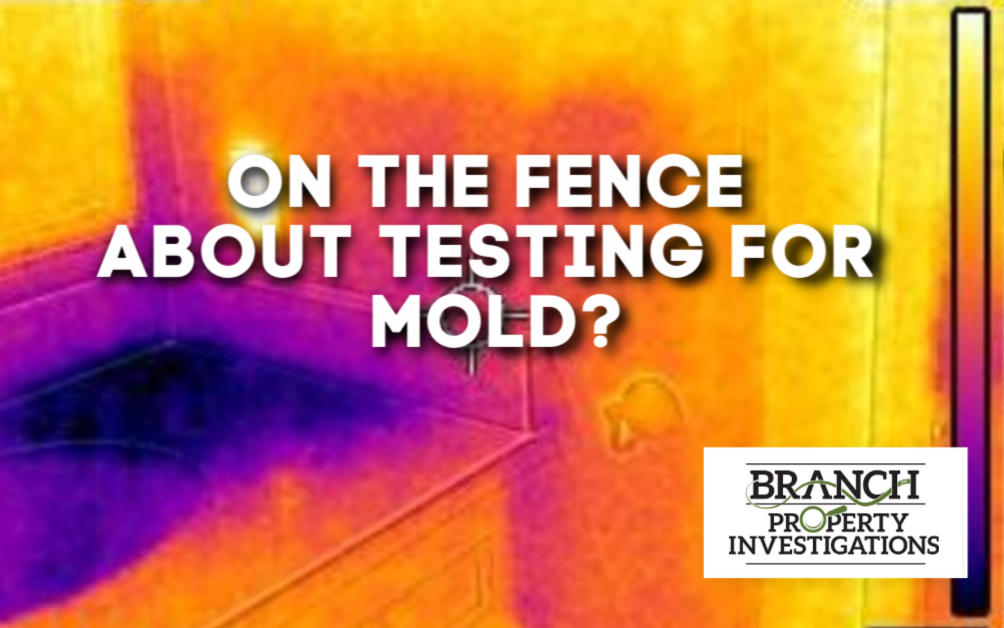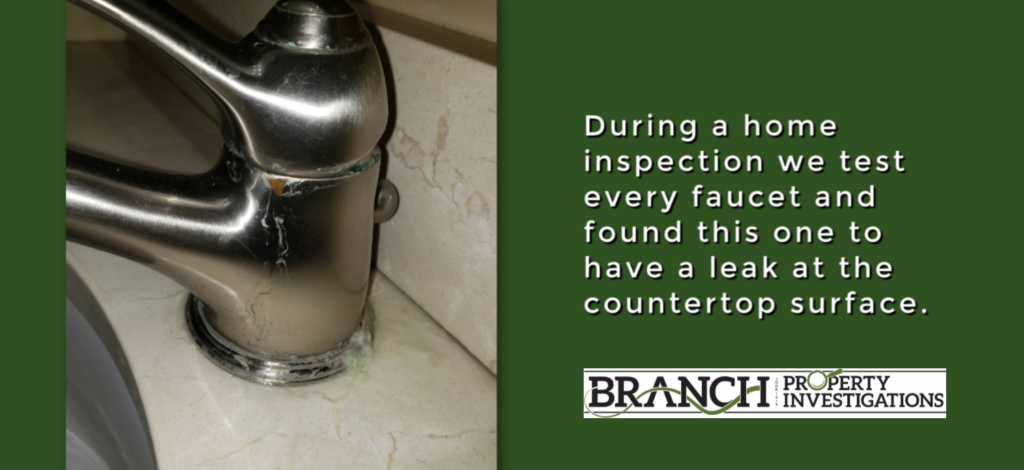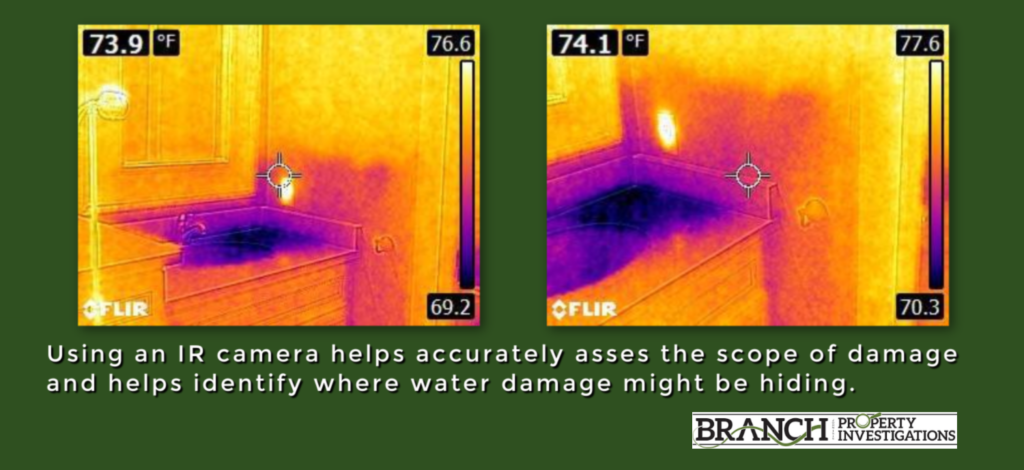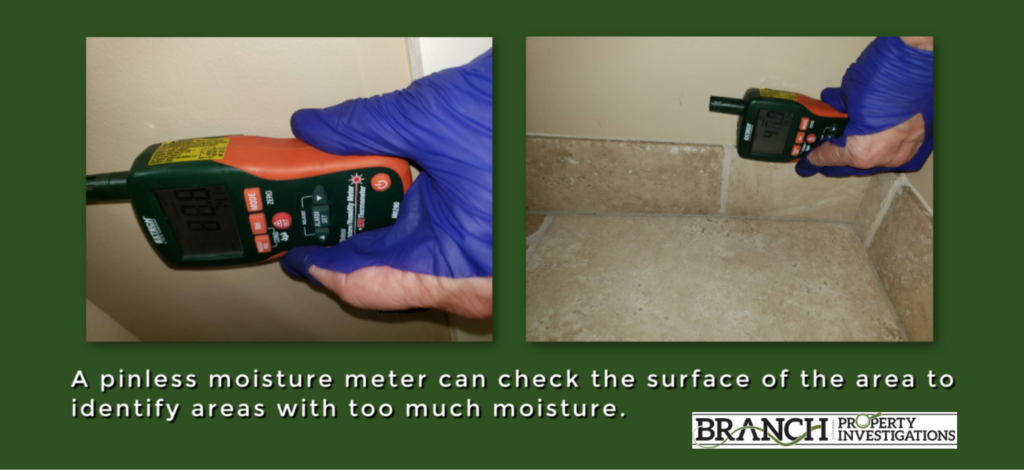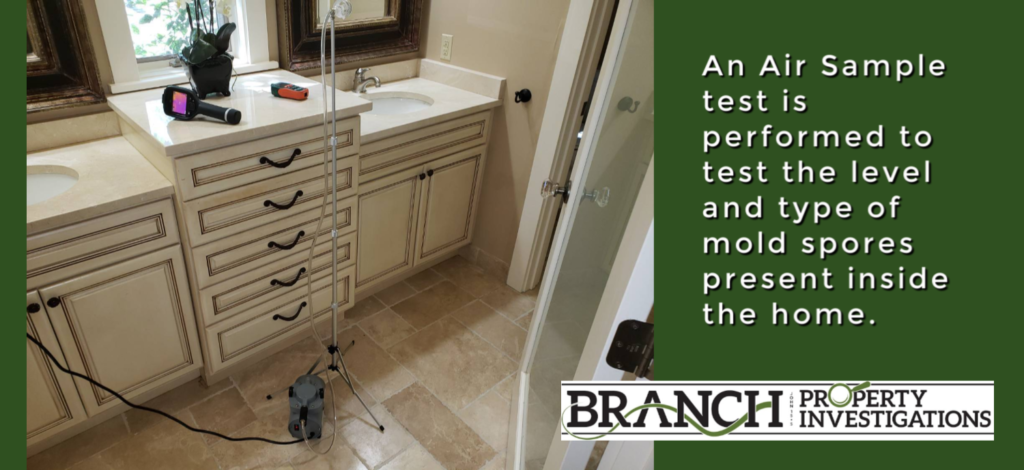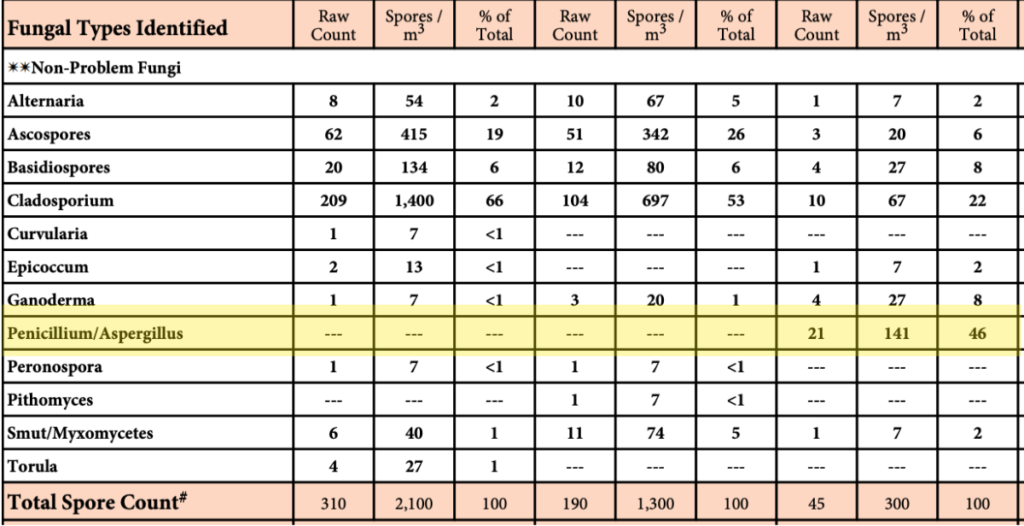Last week I inspected a beautiful lake home built in 2005. Given its age, I didn’t expect to find many of the defects typical of much older homes. The roof and exterior were in relatively great shape and although I noted a fair number of maintenance items on the interior, there were no major surprises, until I tackled the final bathroom. The master bath, however, did have “more than meets the eye” and I’d like to outline what we uncovered.
Finding the Source of the Problem
Routinely during a home inspection I test every faucet. This involves checking for hot and cold water, observing the pressure, ensuring the drain-stopper works properly, and validating there are no active leaks. In this home’s master bath, I was surprised to see water leaking from the base of the faucet. At first glance, there were no visible signs in the surrounding area to provide clues this faucet had been leaking for some time.
When I make a discovery like this, my specialized tools can prove invaluable and provide information otherwise unavailable to an agent or prospective buyer.
Infrared Images from a Thermal Imaging Camera
My infrared camera is a non-contact device that detects infrared energy (heat) and converts it into an electronic signal, which is then processed to produce a thermal image on a video monitor and perform temperature calculations.
Infrared cameras don’t “see” water, but rather can visualize the impact water has on the temperature of surfaces around them due to the evaporation process. The master bathroom wall (right of the vanity) is cooler than surrounding walls. The color change on that wall indicates possible moisture intrusion.
Moisture Intrusion Non-Penetrating Moisture Meter
Next, I used my non-penetrating moisture meter to avoid causing any damage to the wall. To provide a frame of reference, moisture levels of 7-8% are not uncommon. I took several readings along the wall in question (adjacent to the vanity) and the moisture content readings were between 48-100%. These readings warrant further investigation to determine the extent of the suspected moisture intrusion.
It’s important to note there were no visible signs of moisture on the wall. But where there is hidden moisture, there is often hidden mold.
Mold Testing
When visible mold spores aren’t present, we rely on sampling the air. In this case, we wanted to test the level and type of mold spore possibly present in this master bathroom.
We tested the air in the 2nd floor master bath. Additionally, when conditions permit, we always take outdoor air samples on opposite ends of the home for comparison’s sake. (Conducive conditions mean temperatures above 32 degrees F, calm wind, no nearby construction… all of which were met.)
Mold spores are everywhere, however, the results of this test indicate if there are elevated levels inside the home when compared to outside.
Mold Testing Results
Lab analysis proved that although we could not visibly see mold spores in this master bathroom, an elevated spore count existed. Results indicated the presence of mold spores in the Pencillum/Aspergillus family. Due to the known toxicity of this type of mold spore, we recommended reducing the indoor levels to near the outdoor control air.
The extent of this type of contamination warrants hiring a professional remediation company to safely remove the contaminants. This may very well involve removing the vanity, countertop and even a portion of the wall(s) involved.
Choosing the Right Person for the Job
When choosing who will perform your home inspection, it’s important to find a professional interested in solving complex problems. In this instance, It was important to not only find the mold problem. It was also important to understand how to eliminate the moisture source so it won’t reoccur. At Branch Property Investigations, we don’t perform remediation work so we don’t have any conflicts of interest. Helping clients find as much information as possible (about their property) in the time allotted is our #1 priority. Please reach out if we can help you!


